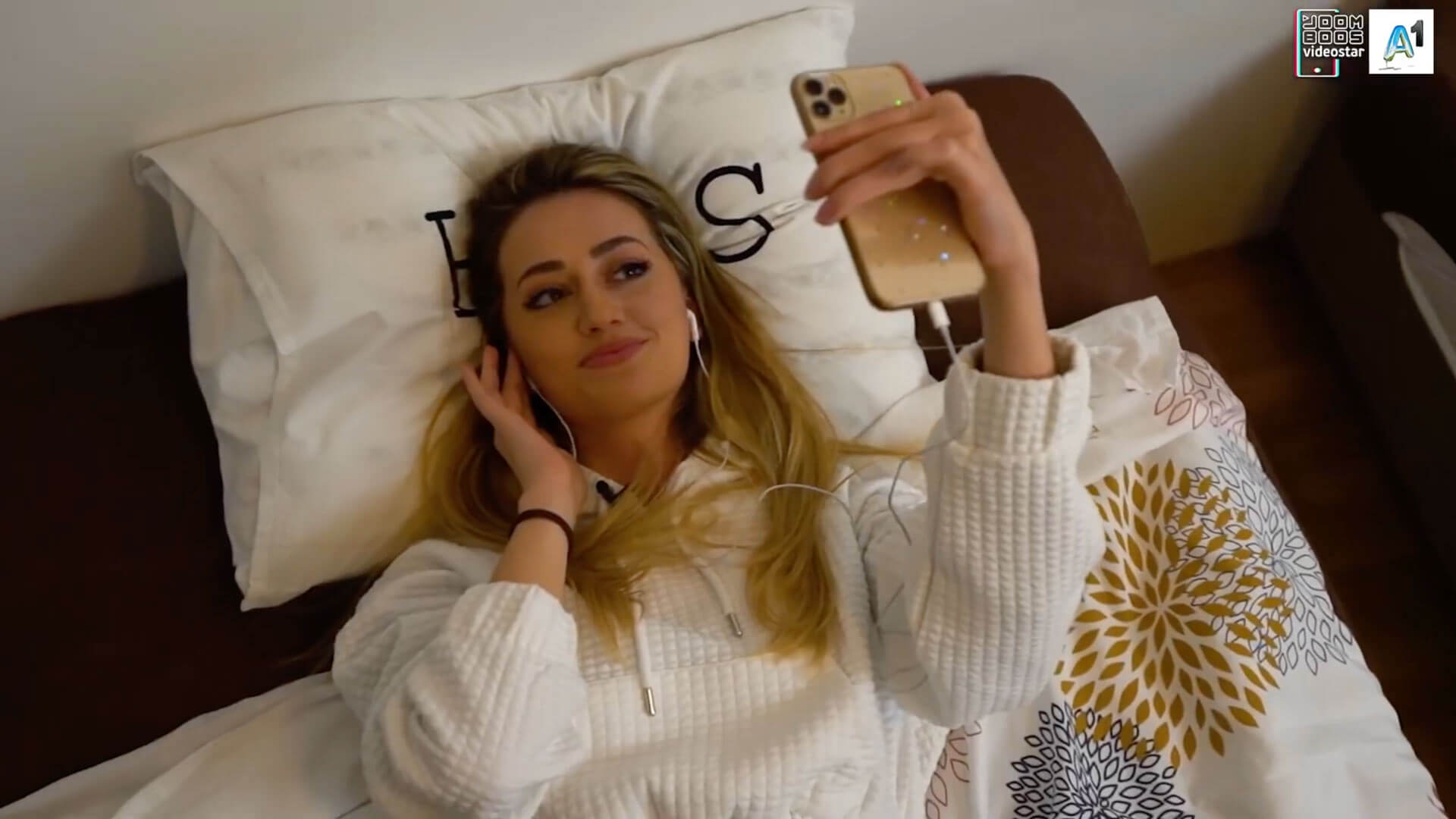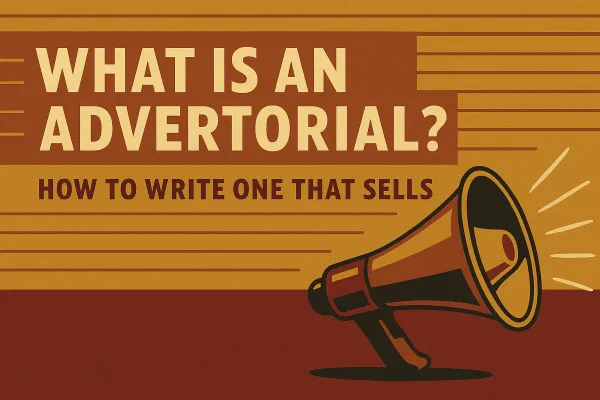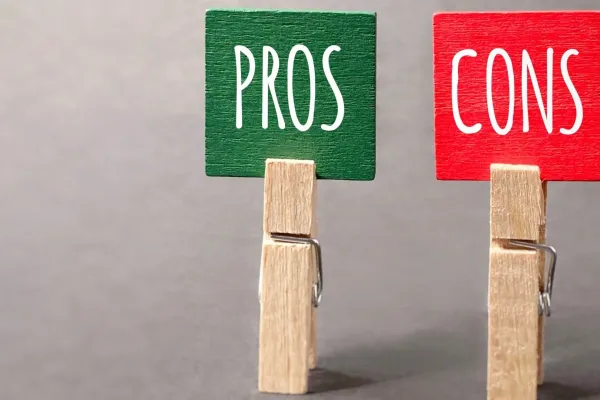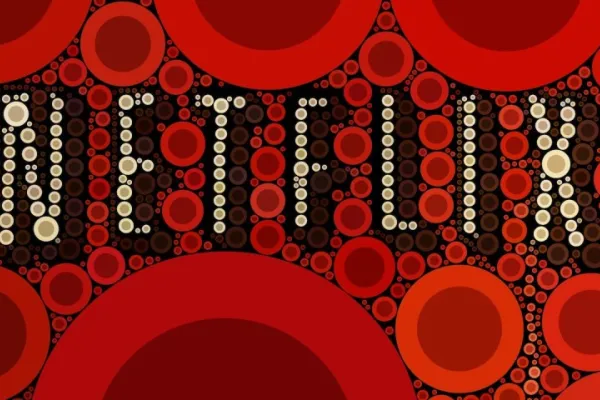
 Details
Details
Banner ads and pop-ups, once staples of online marketing, are experiencing diminishing returns. Studies indicate that the average click-through rate (CTR) for banner ads has plummeted to approximately 0.35%, with over 80% of users just completely ignoring them or use ad-blocking tools to avoid them altogether.
So, how can brands still capture attention in this ad-saturated environment?
Native advertising offers a smarter, more sophisticated solution by seamlessly integrating ads into the content experience. This approach strikes the perfect balance: engaging users without interrupting their journey.
Or at least, that’s the goal.
Whether you’re new to native advertising or looking to refine your strategy, this ultimate guide will take you through everything you need to know, from the basics of what native advertising is to advanced strategies that you can start utilizing today.
READ MORE: New to Native Ads? Check Out Our Native Advertising Glossary!
Clickable table of contents
- What is Native Advertising?
- Types of Native Advertising
- Benefits of Native Advertising
- How Does Native Advertising Actually Work?
- Getting Started with Native Advertising
- How to Create Effective Native Ads
- Native Advertising Examples & Case Studies
What is Native Advertising?
Let’s begin with the basics by defining native advertising in the way we at NAI see it:
"Native Advertising is paid content that matches the look, feel, and function of the media in which it appears."
Let's unwrap that a bit:
Unlike traditional ads, native ads are designed to blend seamlessly into the content around them, providing a non-disruptive experience for the user. They "fit in" with the platform's editorial content, offering a more organic experience that doesn't interrupt the user's journey.
Native advertising is powerful because it respects the user’s experience.
Key Characteristics of Native Advertising
- Seamless Integration: Native ads are designed to match the look and feel of the platform where they appear. This can mean matching the visual style of a news website or social media platform, making the ad feel like part of the content stream.
- Non-Intrusive: Unlike display or pop-up ads, native ads do not interrupt the user’s experience. They sit within the natural flow of the content, allowing users to engage with them in a way that feels voluntary rather than forced.
- Relevant Content: Native ads are often more relevant to the user, as they are tailored to fit within the specific content that the user is consuming. This relevance increases the likelihood of engagement, as users are exposed to ads that align with their interests and needs.
- Increased Engagement: Due to their seamless nature, native ads often see higher engagement rates than traditional display ads. Studies have shown that native ads generate up to 8.8 times more click-throughs than traditional banner ads.
The History of Native Advertising
The concept of native advertising is actually not as new as you may think.
It can trace its roots back to the 1940s, when print ads were designed to blend seamlessly into the editorial content of newspapers and magazines. Over the decades, as digital platforms became dominant, the idea evolved to include formats such as sponsored content, social media posts, and video ads.
Today, native advertising has truly become an integral part of the digital marketing landscape, helping brands reach audiences without interrupting their content experience.
The Recent Growth of Native Advertising
The growth of native advertising has been meteoric. By 2025, the native advertising industry is projected to be worth over $400 billion, reflecting its increasing importance in the advertising ecosystem.
This growth is driven by the effectiveness of native ads in engaging consumers, as well as their ability to overcome the challenges of traditional advertising methods.
But native advertising isn’t just for big brands; small businesses can also leverage this powerful tool to enhance their visibility and drive conversions.
Check out: 10 Best Examples of Small Budget Native Advertising in 2025 [so far]
As the industry matures, new technologies and platforms continue to emerge, offering marketers even more opportunities to scale their native ad campaigns and optimize their strategies.
Is Native Advertising Deceptive?
As native advertising gained in popularity, it has also faced some criticisms. Some argue that when advertising blends seamlessly with the surrounding editorial content, audiences can be deceived into consuming a commercial message against their will.
This isn’t entirely unfounded. The native advertising industry has to accept that it has helped to create this perception. The unfortunate reality is that some native advertising is not clearly labelled as such.
Learn more about this topic in: How to Spot Native Ads
While publishers are required to label native ads, many try to make their labelling as subtle as possible and some still refrain from labelling altogether. In 2018, for example, 9% of publishers globally were still not labelling native advertising.
Native advertising is not meant to be deceptive or to pass for editorial content in an attempt to trick audiences. It’s meant to provide something of value. The problem is that many practitioners have thought that by tricking audiences into consuming native ads, they will be able to have a greater impact. Some still think this way.
It turns out, the opposite is true.
Research shows that the more transparent and explicit a sponsored label is on a native ad, the more receptive the reader is to it. This is particularly true if the ad is contextual and relevant to the reader’s experience.
Learn more about this topic in: 3 Native Advertising Successes & 3 Epic Fails
How Native Advertising Differs from Traditional Ads
As we've established, traditional display ads often get blocked or ignored by users, while native ads seamlessly integrate into the content experience. Unlike banner ads, which typically appear in designated spaces like the top or side of a webpage, native ads are embedded within the content itself, making them harder to overlook.
The key difference is that native ads blend in with the surrounding content—whether it’s an article, a social media post, or a search engine result—creating a less disruptive experience. This subtle integration improves user engagement and reduces the chances of the ad being perceived as an interruption.
Learn more about this topic in: Native Ads vs Display Ads: Which Leads to Better ROI?
| Ad Type | Characteristics |
|---|---|
| Traditional Ads |
|
| Native Ads |
|
Types of Native Advertising
There are several types of native advertising that brands can leverage, each with its own unique advantages. Here are the most common types:
- In-Feed Ads: These ads appear directly in the content feed on platforms like Facebook, Instagram, and LinkedIn. They match the look and feel of the content around them, such as a news article or social media post, and are often labeled as “sponsored” or “promoted.”
- Sponsored Content: Sponsored content typically takes the form of articles, blog posts, videos, or infographics. These are paid-for pieces of content that appear within the editorial sections of websites and match the publication's tone and style. Sponsored content is particularly effective for telling a brand story or providing in-depth insights on a topic.
- Search & Promoted Listings: These are paid ads that appear in search engine results or in the sidebar of a website. While they look like regular search results, they are labeled as “sponsored” or “ad,” making them clearly distinguishable from organic content.
- Content Recommendations: Often found at the end of an article or within the sidebar of a website, these are suggested links to other content that may be of interest to the reader. They are typically displayed as “related stories” or “you might like” and are designed to keep users engaged with more content.
Learn more about this topic in: Types and Formats of Native Advertising in 2025
Benefits of Native Advertising
| Benefit | Description |
|---|---|
| Enhanced User Engagement | According to a study by Sharethrough, Native ads are 53% more likely to be viewed than traditional display ads because they blend seamlessly into the content, making them feel more organic and less intrusive to users. |
| Higher Conversion Rates | Users are more inclined to take action when engaging with native content. The smooth integration of ads into the content stream increases the likelihood of users completing desired actions, such as making a purchase or signing up. |
| Improved Brand Perception | Native ads build trust with users due to their relevance and subtle integration. Since they don’t disrupt the user’s experience, they help foster a more positive brand image. |
Learn more about this topic in: Top Benefits of Native Ads – And How to Avoid Pitfalls
How Does Native Advertising Actually Work?
Native advertising works by delivering highly relevant content that aligns with both the user’s interests and the format of the platform it appears on.
Often, native ads utilize sophisticated targeting techniques, leveraging data-driven insights to ensure the ads are tailored to the specific needs and desires of the audience. By understanding user behaviors, preferences, and content consumption patterns, native ads are able to reach individuals with content that resonates deeply, increasing the likelihood of engagement and conversion.
One of the key factors that makes native advertising effective is its focus on targeting and contextual relevance.
Rather than simply serving an ad to a broad audience, native ads are designed to appear alongside content that already aligns with the user’s interests.
For example, if a user is reading an article about fitness, a native ad for sports equipment or health supplements will naturally fit within the content, making it more likely that the user will engage with it. This targeted approach ensures that the right message reaches the right person at the right time, which enhances the overall effectiveness of the campaign.
Another essential element of native advertising is the seamless integration. Native ads appear as part of the editorial content or social media feed, maintaining the same format and tone as the platform's regular posts.
This integration makes the ad feel like a natural part of the user’s browsing or reading experience, reducing the chances of the user feeling interrupted or distracted. The more the ad blends in, the less likely it is to be perceived as an advertisement, which leads to better engagement.
Dive deep into our massive case study database with award-winning native advertising campaigns: Native Advertising Case Study Database
Getting Started with Native Advertising
Launching a native advertising campaign may seem like a complex process, but by breaking it down into manageable steps, you can set your campaign up for success.
1. Define Objectives
The first step in any campaign is to clarify your goals.
What are you trying to achieve with native advertising? Are you looking to boost brand awareness, drive website traffic, or generate leads?
By defining clear and measurable objectives, you can tailor your campaign to meet those goals. For example, if your aim is lead generation, you may focus on creating content that encourages sign-ups or downloads.
2. Select Platforms
Next, you’ll need to choose the right native advertising platforms for your campaign. The platform you select should align with your target audience and the type of content you plan to promote.
For instance, if you’re targeting a professional audience, LinkedIn may be the best platform. For a younger, more casual demographic, platforms like Instagram/Facebook or TikTok may work better. It's important to understand where your audience spends their time and ensure your native ads blend well with the platform’s content.
In addition to social media platforms, there are programmatic native advertising platforms like Outbrain and Taboola.
These platforms allow you to place native ads across a wide network of premium publisher sites. By leveraging programmatic technology, you can target audiences based on data insights and real-time behavior, optimizing your campaign's reach and performance.
3. Create Compelling Content
The heart of native advertising is the content itself. Native ads must provide value to the user, whether through useful information, entertainment, or solving a problem.
The content should seamlessly fit the platform’s format and engage the audience in a way that feels natural. Remember, your native ad should feel like part of the content users are already consuming, whether it's an article, an advertorial, video, or social media post.
The more relevant and high-quality the content, the more likely it will resonate with your audience.
4. Monitor and Optimize
Once your native ads are live, it’s crucial to measure the ads performance and make necessary adjustments. Use analytics to monitor metrics such as click-through rates, engagement, and conversions.
Based on this data, you can refine your targeting, content, and approach to improve results over time. A successful native advertising campaign is one that continuously evolves and adapts to user feedback and performance data.
Learn more about this topic in: How to Use Native Advertising on Social Media
How to Create Effective Native Ads
Creating successful native ads involves more than just placing content on the right platform—it’s about crafting content that feels natural, resonates with your audience, and leads to meaningful engagement.
Below are 3 key steps to help you create compelling native ads that will perform well:
1. Align with Platform Aesthetics
Understand the Platform's Visual Style
Each platform has a unique visual identity and design language. Instagram is highly visual, while LinkedIn is more text-focused and professional. Align your ad’s design with the platform’s visual style by matching color schemes, fonts, and layout. This will help your native ad blend seamlessly with the surrounding content, making it feel like part of the experience rather than an interruption.
Match the Tone and Voice of the Platform
Platforms have distinct tones of communication. Instagram and TikTok often use casual, engaging language, while LinkedIn prefers a professional, polished tone. Ensure your ad's voice aligns with the platform's tone—this helps to create a seamless experience for users and prevents your ad from feeling out of place.
Leverage Platform-Specific Features
Each platform offers unique features that can enhance your native ad. For instance, Instagram Stories are perfect for vertical video ads, while LinkedIn is ideal for long-form sponsored content. Use these features to your advantage by designing ads that match the platform’s format, ensuring better engagement.
Visual Consistency with User-Generated Content (UGC)
Native ads should mirror the type of content users typically see on the platform. If users are sharing personal photos, your ad should feel personal and relatable. If it’s a professional platform, your ad should match the tone and quality of user-generated content like business insights or professional tips.
Mobile-First Design
Since a significant portion of native ads are viewed on mobile devices, it’s crucial to design with mobile in mind. Ensure your images are responsive, your text is legible without zooming, and your ad looks good on both small and large screens. Mobile-first design helps improve engagement and ensures a smooth user experience.
Checklist for Alignment:
- ✔ Is the design in line with the platform’s typical content style?
- ✔ Does the tone of your ad match the platform’s voice (casual vs. formal)?
- ✔ Have you used platform-specific features (e.g., Instagram Stories, carousel ads)?
- ✔ Does your ad feel like part of the organic content stream, not an interruption?
- ✔ Have you optimized the ad for mobile viewing?
2. Provide Value
Educate the Audience
One of the most effective ways to provide value is through educational content. If your ad is about a product or service, focus on educating the user about how it works, how to use it, or why it’s beneficial. Instead of simply listing the benefits of the product, provide advice on relevant topics that enhance the user’s experience.
Entertain and Engage
Native ads don’t have to be strictly informative; they can also entertain. Platforms like Instagram and TikTok are perfect for short, engaging videos or interactive posts. If you’re targeting a younger audience, consider creating ads that are fun, shareable, and engaging while still aligning with your brand’s message.
Solve a Problem
Users turn to native ads when they’re looking for solutions to specific problems. Whether it’s a product review, a how-to guide, or an informative video, make sure your ad addresses a pain point and offers a practical solution. This positions your brand as helpful and trustworthy.
Be Relatable and Authentic
Relatable and authentic ads are more likely to build a connection with the audience. Avoid overly polished corporate language and instead speak to your audience in a tone that reflects real experiences and concerns. Authenticity leads to trust and stronger engagement.
Offer Insightful Information
Another effective way to provide value is by offering insights that the audience may not be aware of. Share industry trends, research, or expert opinions. Providing valuable information positions your brand as a thought leader, encouraging users to engage and trust your content.
3. Include Clear CTAs
Be Clear and Direct
Your CTA should clearly state the action you want users to take. Use concise, action-oriented language like “Get Started” or “Shop Now” to guide users toward conversion. Avoid vague CTAs like “Click Here.”
Make It Visually Stand Out
Position your CTA in a prominent location within the ad, and make sure it’s easy to spot. Use contrasting colors like bright red or yellow to ensure it grabs attention. Consider adding hover effects or subtle animations to make the CTA feel interactive.
Keep It Short and Sweet
Use concise phrases that clearly communicate the action. Keep the text short so users can quickly understand what you want them to do. Phrases like “Sign Up Now” or “Learn More” are easy to digest and effective.
Create Urgency
Encourage users to act quickly by adding urgency to your CTA. Use phrases like “Limited Time Offer” or “Act Now” to create a sense of urgency, motivating users to take action immediately.
Test and Optimize
Always test different CTA variations to see which ones perform best. A/B test different wording, button colors, and placements. Continuously optimize your CTAs based on performance data to maximize conversions.
Learn more about creating outstanding native ads in:
- How to Write Native Ad Headlines that Boost Performance
- Visual Ads Masterclass: 8 Essential Visual Techniques for Advertising
- How to Create a Native Advertising Strategy
Native Advertising Examples & Case Studies
Competition in the field of native advertising is getting stronger and more creative. We see that each year when we hand out the Native Advertising Awards.
There are many examples of exciting native advertising campaigns, and our native ad case study datebase is full of them!
But for the purposes of this guide, we’ve picked three winning native advertising campaigns from 2022 that successfully implemented modern principles of native advertising.
Let’s see what they are about and what you can learn from them.
Native Ad Example 1: TikTok Talent Show

This campaign took home three gold medals and two silvers at the Native Advertising Awards in 2022 and with good reason.
Croatian telecom provider A1 and agency partner 24sata captured the attention of the allusive Gen Z audience by meeting them where they are: TikTok and YouTube.
To promote its new music platform that allows users to listen to their favourite songs and trending TikTok music hits, A1 and 24sata created an online talent contest that invited TikTok users with at least 1,000 followers to make a creative video and publish it on their own profile.
Those performances were then played on YouTube over a series of episodes that ultimately crowned a winner. The campaign set the Croatian internet on fire with challenges, dances, music, full-length videos, short clips, interviews and behind-the-scenes snippets. And it produced undeniable results for A1, even recognition from Gen Z as Croatia’s “coolest telecom brand”
Want more great examples of native advertising? Click here to view the top native ad examples from 2025.
Native Ad Example 2: Art is Coming Home
This native ad campaign made the best of a bad situation and proved that, despite rumors to the contrary, print’s not dead yet.
When the grand opening of Norway’s new National Museum of Art was postponed for well over a year because of the COVID-19 pandemic and building delays, it left the museum's impressive collection unavailable to the public.
With art lovers unable to come to the museum, it was decided that the art should go to the people. The National Museum sent key works from the collection to places where the work or artists had some local connection. And not just the places you might expect. Priceless artwork was displayed at a prison, a refugee centre and in one incredibly emotional scene it was brought directly to the home of an elderly woman whose health kept her from travelling.
The campaign was built on a series of sponsored articles that were placed in 56 different local newspapers under the theme Art is Coming Home (Kunsten kommer hjem), demonstrating the enduring power of local printed media.
Read more about this two-time winning campaign here.
Native Ad Example 3: Hyundai's Saving Ithaca’s Seas
Our final example demonstrated the power of beautiful visuals and a compelling story. In a campaign that won gold for Best Use of Video, BBC StoryWorks produced an emotional and informative film documenting the clean-up of an abandoned fish farm by the NGO Healthy Seas in the waters surrounding Ithaca, Greece.
The documentary focused mainly on the NGO's work, linking the common environmental goals with Hyundai's commitment to developing a circular economy. Hyundai's dedication to social responsibility is woven throughout the film, which closes on a global call to fight for a sustainable future while showcasing Hyundai's use of ghost gear in its products.
When we interviewed BBC StoryWorks senior vice president Richard Pattinson, he called the film “a really, really good example of what native advertising and branded content is at its best.” We agree and think you will to when you see the video for yourself:
Read more about this two-time winning campaign here.
A Final Word
As we've explored throughout this guide, native advertising offers a powerful, non-disruptive way for brands to reach and engage their audience. By seamlessly integrating ads into content streams, native advertising enhances the user experience and provides greater value than traditional advertising methods.
This approach not only ensures that your ads are more engaging, but it also allows you to foster trust and build stronger connections with your audience.
Native advertising’s ability to respect the user’s journey while still achieving marketing goals makes it an essential tool for modern digital marketing. Whether you’re trying to build brand awareness, generate leads, or increase sales, native advertising can help you reach your audience in a way that feels organic and valuable.





